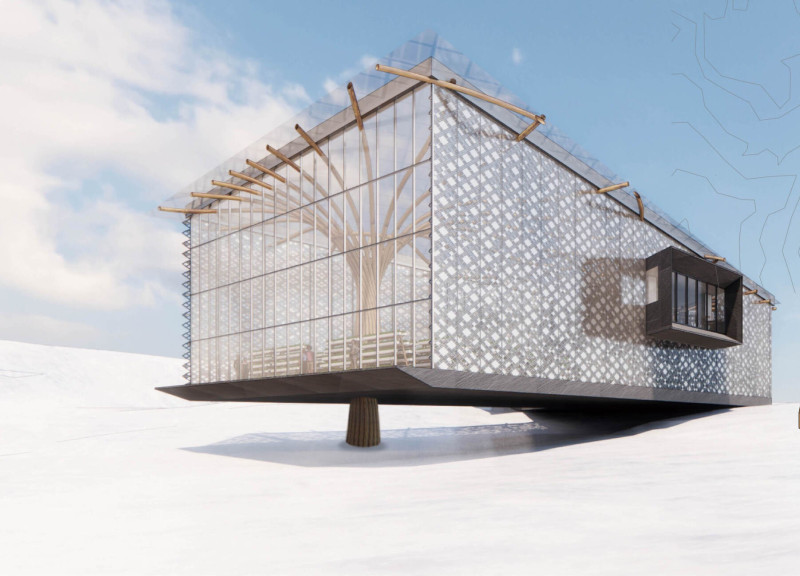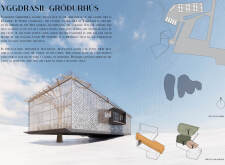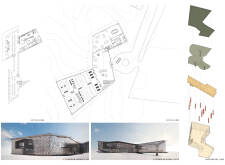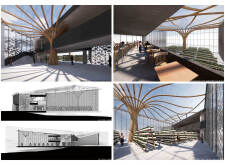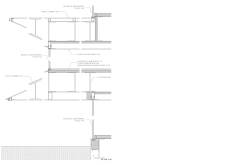5 key facts about this project
At its essence, Yggdrasil Gróðurhús represents a commitment to enhancing local food security while providing a space for connection and education. The structure not only serves as a restaurant but also as a venue for vertical farming, where fresh produce is cultivated on-site. This integrated approach to food production and dining exemplifies a forward-thinking model where customers can enjoy meals made from ingredients sourced directly within the building. This unique function of the project reinforces the importance of community resilience in the face of environmental challenges.
The architectural design is characterized by a thoughtful spatial organization that encourages an easy flow between different areas, such as dining spaces and greenhouse sections. Large, double-glazed windows are a significant feature of the design, maximizing natural light while ensuring energy efficiency. These windows provide diners with a clear view of the vertical gardens, improving the dining experience by creating a deeper connection between the food consumed and the process of its cultivation.
The structural framework includes a central wooden support that resembles a tree, emphasizing the project's thematic reference to Yggdrasil, the Norse tree of life. This design element serves both aesthetic and functional purposes, as it supports the roof while also creating a distinctive visual appeal that enhances the overall atmosphere of the space. The incorporation of natural materials, such as wood and steel cladding, adds warmth and durability, ensuring that the building can withstand the harsh Icelandic climate.
Moreover, the project employs a range of materials that align with its sustainable ethos. The use of concrete and cement contributes to the longevity and practicality of the structure, while the careful design of the floors and ceilings facilitates acoustic comfort and usability in a busy restaurant environment. The overall materiality reflects a conscious choice that harmonizes with the ecological goals and cultural narratives embedded within the design.
A particularly notable design approach is the invitation of nature into the constructed environment. By prioritizing vertical farming and incorporating living elements into the restaurant experience, Yggdrasil Gróðurhús transcends the traditional dining concept. It serves as an educational platform where visitors can learn about local agricultural practices, fostering a sense of community engagement and awareness around food sources.
The presence of multi-functional spaces within the structure further emphasizes its role as a community hub. Beyond serving meals, it provides opportunities for workshops and events focused on sustainability and local cuisine. This versatility strengthens the social fabric of the area and encourages a collective mindset towards environmental stewardship.
Yggdrasil Gróðurhús encapsulates a modern response to architectural challenges that blend functional design with cultural significance. Its commitment to sustainability, community interaction, and educational opportunities showcases how contemporary architecture can effectively address local needs while celebrating cultural heritage. Readers are encouraged to delve into the architectural plans, sections, designs, and ideas behind this project to gain further insights and fully appreciate its thoughtful execution. Exploring these elements provides a more in-depth understanding of how architecture can play a vital role in promoting sustainability and community well-being.


